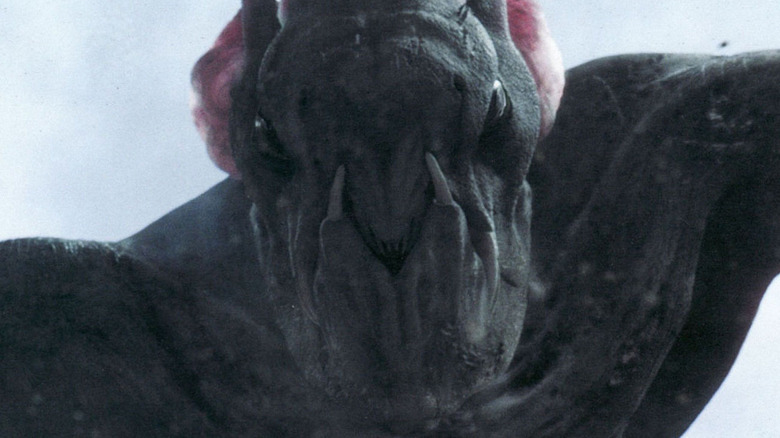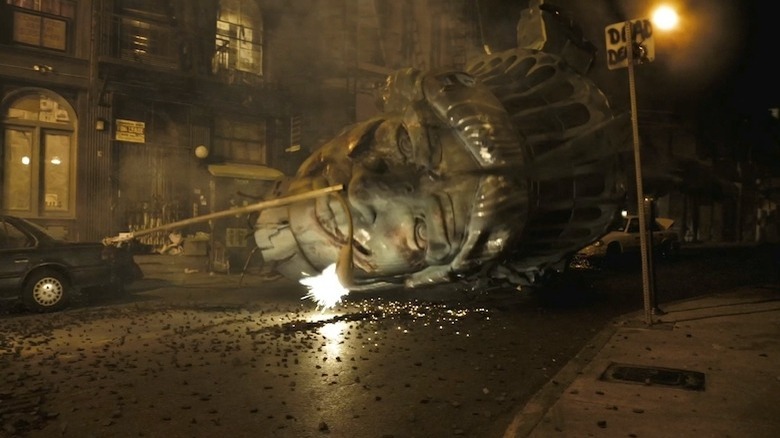Why Cloverfield Makes You Feel Uncomfortable According To Science
Matt Reeves' work has been met with critical acclaim in the last decade as his work on the modern "Planet of the Apes" series impressed theatergoers worldwide. The final part of the trilogy, "War for the Planet of the Apes," holds a 94% critic rating and an 84% audience score on Rotten Tomatoes. But one of his most exciting pieces of work arrived back in 2008 — "Cloverfield." He directed the surprising creature feature, while "Star Wars" alum J.J. Abrams produced it alongside Drew Goddard. The found-footage film follows what happens to a group of friends when a terrifying monster starts rampaging through New York.
Reeves stunned audiences with the visceral, boots-on-the-ground approach to the typical kaiju-flick, adding a dose of horror into the mix by only fully revealing the creature towards the end of the film. Empire Magazine's Olly Richards had high praise for "Cloverfield" back in 2008, writing that it was "a dazzling experiment that paid off immensely, this is cinematic pleasure at its purest." Paramount followed the 2008 film with "10 Cloverfield Lane," a self-contained story about three survivors living in an underground bunker. But 2018's "The Cloverfield Paradox" brings back the monster from the first film — and critics weren't as kind with the sequel, as it has a 21% rating on Rotten Tomatoes. Ouch.
But the 2008 film is a truly fascinating piece of work from Reeves, but it makes some audiences feel incredibly uncomfortable. According to science, there's a particular reason why.
The shaky hand-held footage caused motion sickness
"Cloverfield" is mainly shot using hand-held footage from a camera used by Hud (T.J. Miller) as he and the rest of the gang scramble across New York to save Beth McIntyre (Odette Yustman), who's trapped in her apartment. Obviously, along the way, they're plagued by the monster and its disturbing offspring, but the shaky-cam footage gave some theatergoers motion sickness throughout the film. Back in 2008, WebMD's Sara Butler wrote, "I saw it this weekend and was so sick to my stomach that I had to leave the theater." She also added, "I have a friend who's an EMT in New Jersey, and she was called to several theaters this weekend to deal with people who were sick."
WebMD explained at the time that although the issue is typically caused by traveling via car, plane, or boat — the film's unique visual style sends "conflicting messages" to the brain "from the inner ear, the eyes, and other parts of the body." The website offers some advice for those dealing with the issue, like looking at the horizon on a boat or sitting near the wings on a plane. Unfortunately, it doesn't give any advice on how to deal with watching a giant creature destroy New York City.
Perhaps the found-footage monster flick is too immersive for its own good.

